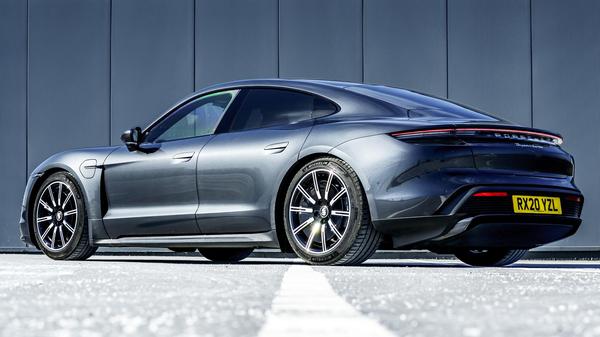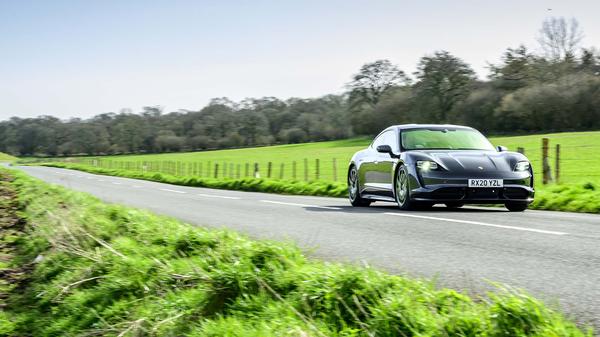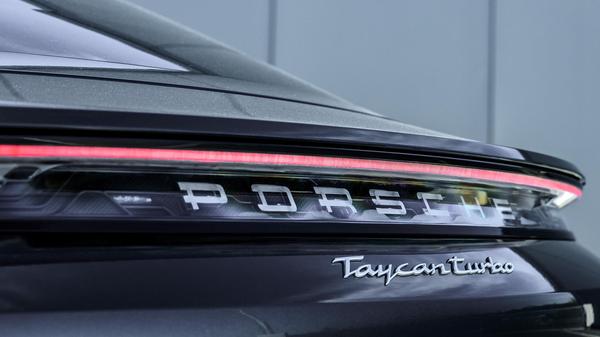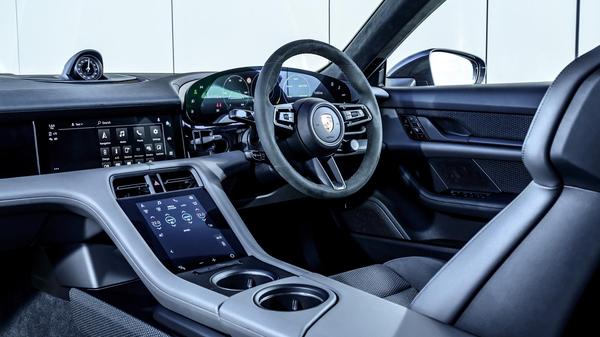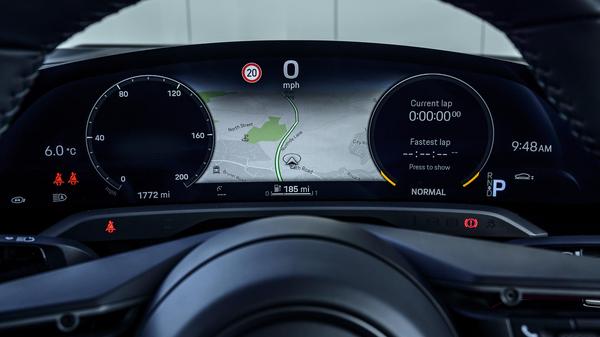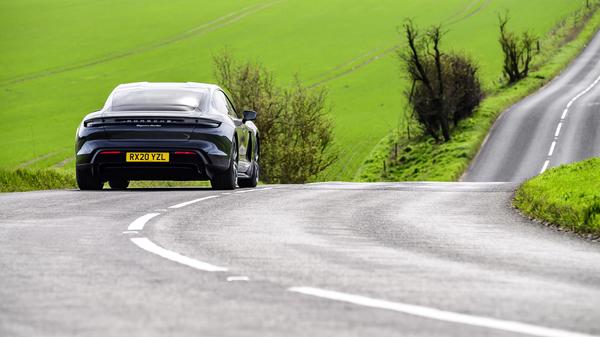In a word? Immense. Even the entry-level Taycan has over 400 horsepower on ‘overboost’, the bigger battery giving you more and making it as fast as a 911 by all the important yardsticks. To borrow terminology from
its Tesla rival things only get more ludicrous as you go up the range, to the point where the Turbo S delivers 761 horsepower on overboost and will eat supercars for breakfast, all in total silence.
The entry-level car uses a single motor powering the back wheels and has impressive traction while the faster ones get an extra one up front to power all four wheels for maximum performance in all conditions. A nifty computer controlled two-speed gearbox at the rear also means Porsche can tune the handling to make it as exciting to drive as its more traditional sports cars. With self-explanatory modes going from Range to Sport Plus you simply set the car up for the road ahead, plant your right foot and watch the world go blurry. When you back off there are three levels of regeneration to choose from, Porsche saying up to 90 per cent of the braking can be done this and help charge the battery on the move.
Speaking of
range and charging the Taycan is arguably a few steps ahead of the network required to support its sophisticated 800V powertrain. When
suitable chargers come on stream you’ll be able to add 60 miles of range in just five minutes, or go from 5-80% in just over 20 minutes. Before you get too excited even the fastest DC chargers you’ll currently encounter need 90-plus minutes to do the latter and it’ll take 13 hours to fully charge a Taycan from a regular domestic wallbox. The infrastructure will catch up but, suffice to say, that performance doesn’t come ‘free’ and the Taycan has a hunger for charge that matches more conventional sports cars’ appetite for unleaded.
Range will vary a lot according to the model, how you drive, weather and many other variables but goes from a worst case of little over 200 miles to nearer to 300 if you take it easy. For reference in our hands an enthusiastically driven loop of both motorway and back roads in the middle of winter saw us cover nearly 180 miles, with 25 still ‘in the tank’ when we finished.
